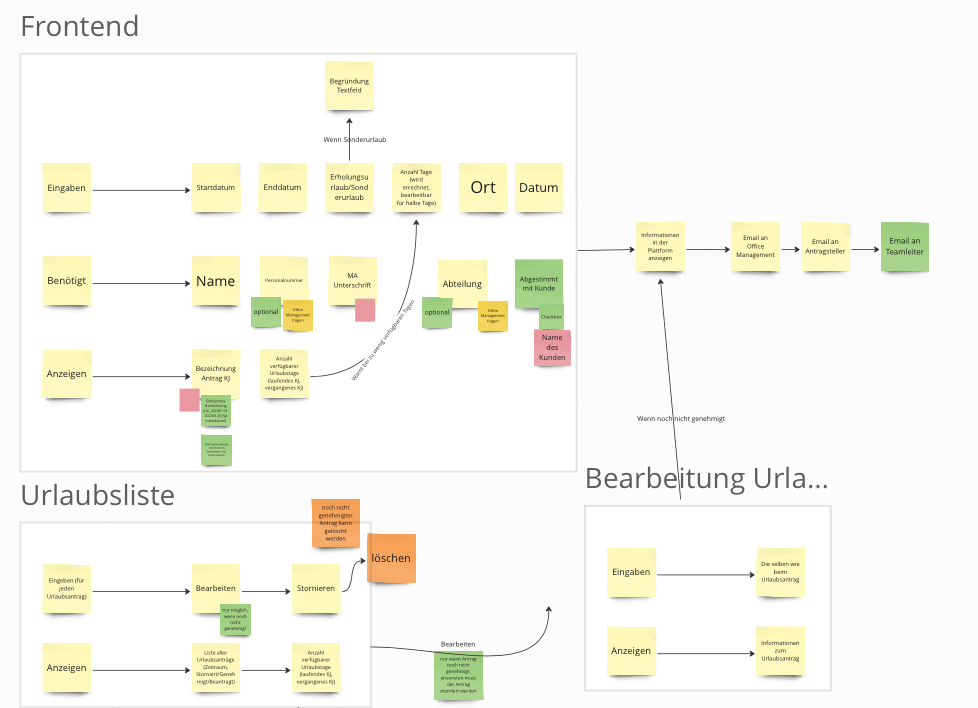
Energy Markets: a Rising Demand For Flexibility
A closer look at the energy market

Henning Schneider
Wednesday, May 31, 2017
A demonstration of an ever-increasing effort to balance supply and demand in the energy market
Flexibility Marketing Business Model
In a previousHow the Energy Market Reacts to a Changed Environment, the important balance between supply and demand in the energy market has already been discussed. In the future, this equilibrium will only be achieved through ever-increasing expenses. For example, the costs for congestion management increased from about €350 million in 2014 to about €1,000 million in 2015 (according to Redispatch in Germany; BDEW 2016). The system requires flexibility on the supply and demand side to efficiently use the supply-dependent generation. The need for available flexibility, e.g., in the form of demand-side management, is increasing and will continue to become more important in the future.
The business model described here aims at this demand and shows possibilities to use it economically.
Prerequisites For The Business Model
The business model requires valid data, preferably in real-time, for all relevant players in the energy market. These can be divided into three groups:
Customer Data:
- Customers' electricity consumption
- Demand flexibility
- Billing data
Market Data:
- Spot and intraday prices
- Control energy prices
Network Data:
- Control network balance
- Over- and under-supply of the grid
For the marketing of these data, a highly available software system with corresponding control and regulation options is required. In addition, there is the necessary pooling.

Critical Mass Through Pooling
The data mentioned is of little use from a generation plant or from a customer. Therefore, another requirement of the business model is to build a large data pool. E.g. the value-added potential of a refrigerated counter of a supermarket is very small. With 2,000 branches of a supermarket chain with then 2,000 refrigerated counters, orders of magnitude are reached to achieve an additional commercial benefit via consumption, by using flexibility (optimized operation). This can be done, for example, in the form of control energy marketing or through optimized exchange marketing.
Examples of Flexibility Marketing
There are already market-ready ideas for flexibility marketing. Three available applications are briefly described below:
Using Variability For Heating And Cooling Demand
Temperature-controlled processes sometimes offer great potential for flexibility, since a relatively inert system usually has to be operated under certain maximum or minimum temperatures. Cold stores, for example, usually have to be kept below -18°C. However, if the cold store is cooled down to -25°C, e.g. due to low electricity prices or high negative control energy demand, this has no negative impact on the cooled goods. This principle can be applied analogously to the use of heat pumps/melting boilers etc.
Power-to-X
When using electricity for mobility (power-to-mobility), heat (power-to-heat) and gas (power-to-gas), low electricity prices and negative control energy prices can be used for marketing. For example, the electric car is only charged when electricity prices are low or synthetic methane is produced via power-to-gas during this time.
Variable-Price Electricity Tariffs
Variable-price tariffs can be used to encourage customers to optimize their demand for electricity. For example, times, when peak loads have occurred in the past, can be "sanctioned" with higher electricity prices, while times with lower loads are offered at lower prices. These do not necessarily have to coincide with the Germany-wide electricity price, but could also be optimized specifically for the company's own portfolio. With these measures, customers can be offered more favorable rates on average and grid fees (based on maximum load) can be saved for the electricity provider. A win-win-win situation, since in addition to the electricity provider, the electricity customer is also relieved of the network operator.
Value Network
The marketing of flexibility influences the value network of a remote utility. The formerly unidirectional connection between the remote utility and the customer is transformed into a bidirectional connection. The customer is empowered by the business model to offer services to the RU in the form of flexibility and to obtain a price for it. If the utility reaches the necessary critical mass, it can create a pool for balancing energy and thus tap new value creation potential.

Overall, this business model makes the value network of a remote utility more complex and flexible. Pure top-down relationships become more complex relationships, which on the one hand enable new value creation potentials and on the other hand also require automated processes and efficient organizational structures.

Evaluation With The Help of The Scenarios
In this part, flexibility marketing is evaluated using the 4 scenarios. As a reminder, new business models should be robust to multiple, valid scenarios to ensure future-proofing of the necessary investments. The 4 known scenarios are Cheap Energy, Expensive Energy, Conventional Energy, Renewable Energy.
Cheap Energy
The Cheap Energy scenario is characterized by overcapacity on the supply side and relatively low government levies on the electricity price.
Flexibility marketing cannot unlock its value creation potential for this scenario. This is due to the following reasons:
- Low electricity prices and thus low revenue potentials on the part of customers lower the will to offer flexibility at all.
- The prevailing excess capacities (also from conventional generation) make it easier to balance supply and demand. Surpluses are either exported or the generation is curtailed. Grid operators, therefore, have little need for flexibility, and prices for flexibility are low.
- The government has a secure, low-cost energy system and does not need to manage this market via new subsidies/sanctions. For the business model, this means that new incentives for flexibility are unlikely and thus no further value creation potential can be tapped.
Expensive Energy
The Expensive Energy scenario is characterized by insufficient supply capacities, possibly in conjunction with high government levies.
For this scenario, the flexibility marketing business model works and helps to develop competitive advantages as well as new value creation potentials:
- High retail prices lead to increasing demand for savings opportunities on the part of customers. They are willing to make additional efforts to achieve lower energy costs. By marketing flexibility, the utility can offer precisely these savings opportunities and thus also intensify customer loyalty.
- Relatively small savings can mean big economic benefits for customers. For example, a variable electricity tariff with a large price spread has a greater incentive effect than a variable electricity tariff where the prices hardly differ.
- The energy market is the focus of public and political attention in the Expensive Energy scenario. There is an increased likelihood that new regulatory measures will create additional incentives to make the electricity market more flexible. For example, the state could sanction utilities that are unable to reduce their demand in the event of excess demand, i.e. cannot react flexibly to the relationship between supply and demand. Conversely, the state could additionally reward pool operators for balancing energy that offers flexibility through state remuneration. Here, too, the business model and the strategic focus of the utility on the marketing of flexibility help to tap the additional potential.
Conventional Energy
In this scenario, sufficient capacity (mainly conventional generation) is available at all times of the year.
For this scenario, the flexibility marketing business model cannot unlock the full value creation potential despite average electricity prices:
- Conventional generation is easier to regulate than a generation from renewable sources, as it is not dependent on the supply of wind and solar. Therefore, supply or demand surpluses do not (or very rarely) occur, as a generation can be adjusted to demand in a functioning electricity market. The need for flexibility is low.
- A low need for flexibility means low compensation for it from both a government and customer perspective.
- New value creation potentials can therefore only be developed to a lesser extent and the necessary investments for the business model have a higher payback period.
Renewable Energy
In this scenario, the electricity supply is largely characterized by supply-dependent renewable generation.
In this scenario, too, the marketing of flexibility can open up new potential for value creation and enable competitive advantages for the utility.
- In this scenario, more effort must be expended for secure grid operation. However, this also means that grid operators are more willing to pay for flexibility and control energy. Both factors favor the marketing of flexibility and mean economic advantages.
- From the government's point of view, the system and supply security of the power grid is of great importance, since a failure of the power grid would cause very high costs. Again, it can be assumed that the state favors utilities that can flexibly adjust to changing supply and demand conditions.
- Geographically, renewable electricity generation and electricity demand are unfavorably distributed in Germany. In the north, especially in coastal areas and due to increasingly large offshore capacities, there is a supply surplus. In the south, where a large part of the industry and thus of the demand for electricity is located, there is a surplus of demand, which will increase further as a result of the decision to phase out nuclear power. To compensate for this, high-performance transmission capacities are needed. However, grid expansion is lagging well behind the planned expansion targets. Here, too, the need for new networks can be reduced, at least at the regional level, with the help of intelligent marketing of flexibility. Here, too, it can be assumed that regulation will favor utilities that demonstrably reduce the need for grid expansion and therefore create additional compensation for utilities.
Summary Evaluation
With the help of the scenarios, an objective and holistic analysis of the business model marketing of flexibility was carried out. For the scenarios Expensive and Renewable Energy, the business model works very well and helps the utility to secure economic success in case of changing framework conditions. For the Conventional and Cheap Energy scenarios, however, the business model is not suitable, or only to a limited extent.
It is up to the respective decision-makers at the utilities to assess the probability of occurrence of the individual scenarios. For the German electricity market, however, the scenarios Expensive and Renewable Energy seems very likely. Renewable energy can already generate electricity at competitive prices (with little or no government subsidies), so an increase in their share can be assumed. Long-guaranteed government subsidies, the sluggish expansion of the grid, and the slow development of international electricity trading will, however, tend to keep average electricity prices constant for the next few years. In particular, the state-determined share of the electricity price (already over 50% today) will remain high. The need to achieve a balance between supply and demand in line with the market through intelligent control and more flexible demand curves is increasing.
Implementation of a New Business Model
Before a utility can devote itself to implementing the new business model, the initial situation must first be analyzed. Only when the question "Where do I come from?" has been answered can the new business model be developed with the help of change management methods and the necessary measures derived.
Business Model Canvas of The Initial Situation
There are many ways to think through business models in a structured way. One model that has proven successful in consulting practice is the Business Model Canvas. All key factors of a business model are systematically analyzed and documented accordingly. The following figure shows an exemplary Business Model Canvas of a medium-sized municipal utility:

Change in The Business Model Canvas of Flexibility Marketing
After defining the initial situation, the next step is to analyze the changes in the Business Model Canvas. The following figure shows the changes in the key factors due to flexibility marketing:

How do I Get to The Goal?
Through the Business Model Canvas, the necessary changes in the key factors have been defined and documented. The questions "Where do I come from?" and "Where do I want to go?" have been answered and the results have been carried throughout the organization. Now that the start and the goal have been defined, one can devote oneself to achieving the goal.

The transformation process can be structured according to phases and activities. The structure divides the extensive transformation process into smaller sub-steps that can be better monitored by the transformation team. An important core element of the transformation process is therefore also to develop results/products as early as possible, on the basis of which tests can be carried out. In this way, the acceptance and value creation potential of the new business model can be analyzed at an early stage and corrections can be made if necessary. It is therefore also advisable to carry out the transformation process iteratively.
Many elements of the transformation process have already been presented in theMastering The Complexity of Energy Markets .
Phase 1:
Based on the energy market model, a market analysis was created and 4 scenarios were developed. With the help of the presented business model database, new business models were analyzed, which should be developed into a prototype in the next step. Stakeholders can be informed and new goals can be defined via the Business Model Canvas. Building on the results, milestone plans and budgets would need to be defined and communicated to successfully execute the transformation process. However, milestone plans and budget planning are very individual, so they will not be discussed in detail here.
Phase 2:
After the business model has been selected, part of the risk assessment can be carried out on the basis of the scenarios. However, other project risks must of course be considered and documented accordingly. In this phase, an initial prototype is also developed based on a rough process and product design. For the business model marketing of flexibility, for example, it would make sense to develop a prototype of the necessary system. This should be able to be connected to the trading and EDM system in order to analyze the corresponding data streams and estimate the dimensioning of the system.
Phase 3:
With the help of the prototype, the first test customers are supplied and user tests are carried out. These results can be used to develop the necessary business processes and organizational structures. In addition, marketing instruments can be implemented and the product can be advertised if the tests are successful. For the business model presented, one could, for example, connect a customer to the newly developed system. This customer should of course have flexibility. For this test customer, one could initially offer the product without remuneration, but nevertheless, already discuss the economic potentials together with the customer. There must be a very close and trusting relationship with the test customer since both operational know-how must be shared on the part of the customer, but the product may also still be defective.
Phase 4:
In the final phase, the finished product is rolled out and acceptance is analyzed in detail. Based on the results of the acceptance analysis and customer support, extensions to the existing business model can be planned. It is conceivable, for example, that initially only one customer group (operators of cold stores) was targeted. However, via an extension of the product, one would now also like to integrate electric car owners into the system.
Throughout the phase, the transformation team has to monitor the development and iteratively define a detailed plan for the coming phases. With the help of ongoing risk assessment and supplier management, project risks can be quickly identified and communicated to stakeholders.
Services
Resources
All Rights Reserved.



